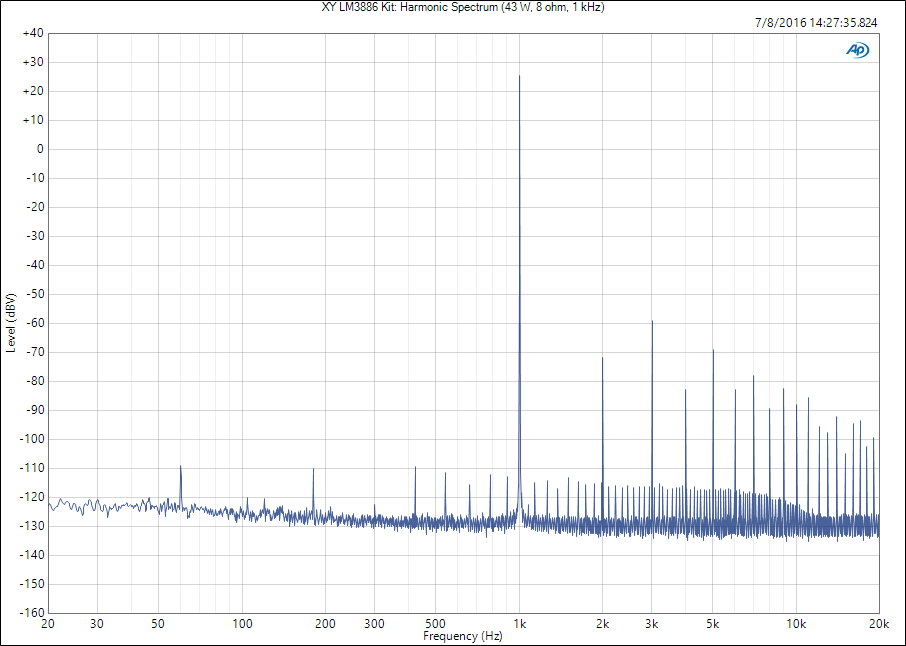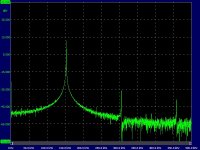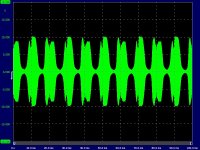The parts clearly have a big influence on a amp's performance.
How would the XY amp perform with genuine quality parts?
tomchr has a good opportunity to show how good his design is, and if it's really worth the extra bucks.
The fake parts should be taken out of the equation.
How would the XY amp perform with genuine quality parts?
tomchr has a good opportunity to show how good his design is, and if it's really worth the extra bucks.
The fake parts should be taken out of the equation.
I'm not sure why anyone would want to use fake/counterfeit parts in a DIY project, no matter the intended use or the cost 'savings'. Let's look at Tom's design for an example. It rough descending order of cost:
1 - chassis -- hard to buy a 'fake' chassis (regular aluminum substituted for transparent aluminum? ;-). This is largely left to the practical and aesthetic choices.
2 - transformer -- why would you want to buy a suspect transformer when the health and safety of you, your family and your home are potentially at risk?
3 - large filter caps; see #2
4 - power amp chip -- a critical portion of the design and a fake is likely a reliability risk
5 - other semiconductors - again, why risk compromising performance to save literally a couple bucks
6 - smaller passive components -- cost is insignificant compared to all of the above; again is it worth it to buy questionable components from questionable sourcs?
7 - connectors, switches, fuse holders, etc. -- again, is the slight cost savings worth it, especially since some of these are also safety-related.
That said, all components should be evaluated for suitability for a design, something that Tom does in his recommended BOM. Yes, I have purchased components of of eBay, but am very careful to make sure I'm getting what I think I'm getting.
One other thought, it has always been my view that one of the joys/benefits if a DIY project is craftsmanship and pride of accomplishment. Given the time and effort to build a project, I wouldn't want to compromise my efforts by trying to save a few pence on highly suspect components. Even if I consider my DIY time worth only the (current) minimum wage, the cost of most of the components pale by comparison to my time investment.
1 - chassis -- hard to buy a 'fake' chassis (regular aluminum substituted for transparent aluminum? ;-). This is largely left to the practical and aesthetic choices.
2 - transformer -- why would you want to buy a suspect transformer when the health and safety of you, your family and your home are potentially at risk?
3 - large filter caps; see #2
4 - power amp chip -- a critical portion of the design and a fake is likely a reliability risk
5 - other semiconductors - again, why risk compromising performance to save literally a couple bucks
6 - smaller passive components -- cost is insignificant compared to all of the above; again is it worth it to buy questionable components from questionable sourcs?
7 - connectors, switches, fuse holders, etc. -- again, is the slight cost savings worth it, especially since some of these are also safety-related.
That said, all components should be evaluated for suitability for a design, something that Tom does in his recommended BOM. Yes, I have purchased components of of eBay, but am very careful to make sure I'm getting what I think I'm getting.
One other thought, it has always been my view that one of the joys/benefits if a DIY project is craftsmanship and pride of accomplishment. Given the time and effort to build a project, I wouldn't want to compromise my efforts by trying to save a few pence on highly suspect components. Even if I consider my DIY time worth only the (current) minimum wage, the cost of most of the components pale by comparison to my time investment.
I can think of young people using a old amp,not working anymore. Destroying 3 kits to get it working. And maybe they have learnt something along the way🙂
Maybe they even have poor parents....
People with founds can buy a Rolls Royce, just because it is "the best". (I admire the people that designs the Rollses,though)
Maybe they even have poor parents....
People with founds can buy a Rolls Royce, just because it is "the best". (I admire the people that designs the Rollses,though)
I didn't suggest that you should on a flagship product like the Mod86 but for a person looking to possibly knock $60 off their mod 86 build, it might be a plausible option.
There is no way I am going down that path. I cannot afford the time to provide tech support on fake parts. If you want cheap, you're not likely to consider the Modulus-86 and I'm fine with that.
I refuse to support the fake part vendors. I value my integrity.
A stereo Modulus-86 will set you back about $400 in materials, including chassis. I have not found any commercial amp that beats the Modulus-86 on THD. If I was set up for commercial production, I'd push it in the $5-10k space. If being able to build a $5-10k amp for $400 isn't enough to entice you, I'm not sure what is.
I was waiting for a report from your TI contact on the "out of spec LM3886 chips" and never saw any further discussion about them.
That would require that I desolder the chip from the board and actually ship it out. It will happen, but it's not a super high priority right now. I will post an update to this thread and update Post #1 with a link to this update. Same with the measurements of the XY board with the real LM3886.
Just for ***** and giggles, I can send you the parts from a Yuanjing kit along with the THAT drivers. I'll buy the boards after you test them no matter what happens. PM me if this interests you.
I'll be more than happy to measure whatever you send me as long as it can be tested safely. My custom measurement service starts at $299.
Oh, one more thing; I've read you like the Panasonic supply caps, do you have an opinion of the Rubycon 50V 105C MXR series?
I'm not brand loyal. I use the Panasonic because they're rated for operation at 105 ºC, have reasonably low ESR, and can handle a bit of ripple current. I'd be just as happy to use any of the other name brands. I have no opinion on the Rubicon specifically. If the ESR and ESL (or SRF) are spec'ed, you can easily see the impact of using one cap versus the other in a circuit simulation of the supply impedance.
Tom
One other thought, it has always been my view that one of the joys/benefits if a DIY project is craftsmanship and pride of accomplishment. Given the time and effort to build a project, I wouldn't want to compromise my efforts by trying to save a few pence on highly suspect components. Even if I consider my DIY time worth only the (current) minimum wage, the cost of most of the components pale by comparison to my time investment.
Exactly. I'm a firm believer in the Do it Right, Do it Once mantra. There was a time some 30-35 years ago when I enjoyed just blowing up components, but these days I much prefer that my circuits work out of the box. My time's too valuable.
Tom
I'm not sufficiently curious to buy the boards, provide the parts for a MOD86 build with an unoriginal LM3886 AND pay you to test it. My idea was to validate the superior influence of your layout. If a mod86 can perform nearly as well with subspec parts then your mantra of "the layout IS the circuit" will never be questioned again. It will also add great prestige to your layout cred while giving members an alternative to a standard build which they can upgrade later with better parts when it's convenient to them. If I'm the only one curious about the outcome of a mod86 with a "fake" op-amp then this will be my last post on the topic. If, on the other hand, members are curious like I am about the magic of Tom's design, they will join me in urging him to do this test and publish the results.tomchr said:I'll be more than happy to measure whatever you send me as long as it can be tested safely. My custom measurement service starts at $299.
The MOD86 is a composite amp with a high-end layout. Plugging in a fake LM3886 will tell you nothing about the layout. You can find a bunch of the measurements I used to validate my layout approach in the LM3886 P2P vs PCB thread where you can see the impact of various layouts directly. You can also see my simulation data on the Grounding page in the Taming the LM3886 series.
Tom
Tom
All this is both true and valuable info but I'd still like to see what changes might happen with a bogus LM3886 on that board. I was hoping you shared my curiosity.tomchr said:The MOD86 is a composite amp with a high-end layout. Plugging in a fake LM3886 will tell you nothing about the layout. You can find a bunch of the measurements I used to validate my layout approach in the LM3886 P2P vs PCB thread where you can see the impact of various layouts directly. You can also see my simulation data on the Grounding page in the Taming the LM3886 series.
I would buy the 3886 direct from Ti to ensure a full spec genuine chipamp gets installed in any of my builds.
All this is both true and valuable info but I'd still like to see what changes might happen with a bogus LM3886 on that board. I was hoping you shared my curiosity.
I think the other way around is the interesting.Genuine similar parts on the two boards. Then we see the difference of the boards + the small "short cuts" that xy does.
The suggested measurement will only show how much the "fake" part violates the original spec.
And "everyone" can measure down to 0.002 distortion. You don't need Audio Presicion to do that.
By the way, I am impressed with the XY kit noise floor at 43watts @ 8 ohm. That measurement is not so easy to do on a hobby measuring workbench, so thank you, Tom, for documenting.
Do anyone know legitimate parts that can do this at 10$? (sine at +25 db, noise residue at -130dB) and harmonics at only -60dB.

Last edited:
So maybe the XY is great for home linearrays with one amp pr. speaker element. (All amps on same +/- 28V rail.)
Say 8 or 16 elements each side. The sound preasure would be something🙂
(Remember the V square element in watts and series element halves the volts for each element)
But of course if xy kits are prone to fail, you would have a problem:-(
Say 8 or 16 elements each side. The sound preasure would be something🙂
(Remember the V square element in watts and series element halves the volts for each element)
But of course if xy kits are prone to fail, you would have a problem:-(
But of course if xy kits are prone to fail, you would have a problem:-(
Says who?? Have used them for many years without issue!😕
Super!Says who?? Have used them for many years without issue!😕
It has been sugested here that it is a fake component (small die?). So maybe it is a discarded genuine component and has the same lifetime as the "official supply line" parts, just some parameter not so good as spec.
I have, mysef, put in known 220uf caps, so they dont dry up so fast. But maybe the original ones are OK, so it is just vaste of 1 dollar.
Last edited:
I have bought both the kits (with the so called "fake" chips), and bare boards, then stuffed them with parts from RS (hopefully with so called "genuine" parts...who knows). All have worked perfectly to my ears, some have been modified (or hacked as TomCR calls it) as per ideas from this forum.Super!
It has been sugested here that it is a fake component (small die?). So maybe it is a discarded genuine component and has the same lifetime as the "official supply line" parts, just some parameter not so good as spec.
I have, mysef, put in known 220uf caps, so they dont dry up so fast. But maybe the original ones are OK, so it is just vaste of 1 dollar.
TBH the best so far was modified XY board, fitted in a double insulated case, that required no connection to mains earth.... dead silent on no input.
The XY boards are so cheap, buy 10 and "hack away"😉
Last edited:
Tried with +-36volts it went into self sving with input. So no measurements from me. Has to try with lesser Volts. (+-28volts)
Maybe it is something with my soldering on the two boards.
Maybe it is something with my soldering on the two boards.
There is a problem with the reasoning about fakes. There appears to be the assumption that there are only two types of LM3886 ICs, "real" and "fake". In reality, if the counterfeiters pass off whatever they think they can get away with passing off. That may vary from week to week. So it's not valid to say that the counterfeits are reliable based on a few units one has purchased -- you may have just been lucky.
The theory that somehow many/most of the fake LM3886s on the market are units that failed final electrical test at the TI/NS factory and escaped to the counterfeiters is likely overly optimistic. The major semiconductor companies tightly control scrap at their factories and their subcontractors. There are incidents of escapes, but I don't believe enough to provide a steady supply to the counterfeit market.
The theory that somehow many/most of the fake LM3886s on the market are units that failed final electrical test at the TI/NS factory and escaped to the counterfeiters is likely overly optimistic. The major semiconductor companies tightly control scrap at their factories and their subcontractors. There are incidents of escapes, but I don't believe enough to provide a steady supply to the counterfeit market.
Then of course if you find i nice batch you pile up, like you do with whisky, wine or tubes.
Off topic:
I made a nice 150kHz unstable oscillator with a XY kit. 4 volts RMS into 5 ohm. +/- 26volt. (Found a 18V transformer in my parts drawer.)
By the way: no fumes from the chip. Just a little warm🙂
Guess i should not have tampered with it, see if I can get it to work...
Off topic:
I made a nice 150kHz unstable oscillator with a XY kit. 4 volts RMS into 5 ohm. +/- 26volt. (Found a 18V transformer in my parts drawer.)
By the way: no fumes from the chip. Just a little warm🙂
Guess i should not have tampered with it, see if I can get it to work...
Attachments
Then of course if you find i nice batch you pile up, like you do with whisky, wine or tubes.
Or you could just buy a couple of tubes of real LM3886es from the distributor and get a pretty decent bulk discount. I still don't understand why you'd want to use a fake part to begin with. Do you buy fake tires for your car too?
Interesting with the 150 kHz power oscillator. Too bad the phase noise isn't all that great... 🙂 I've never seen an LM3886 oscillate on its own. In a composite loop, sure, but never on its own. Then again, I work with good layouts and real chips.
Tom
The XY is up and running with mods.
Sounds good. Measures good. No noise.
Sure beats the crap out of the Juanjing kit!
That kit had almost no bass. The XY have!
I am very happy with the sound and performance of the XY.
Sounds good. Measures good. No noise.
Sure beats the crap out of the Juanjing kit!
That kit had almost no bass. The XY have!
I am very happy with the sound and performance of the XY.
Or you could just buy a couple of tubes of real LM3886es from the distributor and get a pretty decent bulk discount. I still don't understand why you'd want to use a fake part to begin with. Do you buy fake tires for your car too?
Interesting with the 150 kHz power oscillator. Too bad the phase noise isn't all that great... 🙂 I've never seen an LM3886 oscillate on its own. In a composite loop, sure, but never on its own. Then again, I work with good layouts and real chips.
Tom
I made a stupid mistake of putting a cap across the +\- instead of to ground. Hence the oscillation.
I would not use the chip in a security system, but personal use in a home stereo is hardly that. Tubes blow up, people still use them.
I buy independent bottler whisky when it is cheaper and just as good;-)
Last edited:
- Home
- Amplifiers
- Chip Amps
- XY LM3886 Kit Review & Measurements

